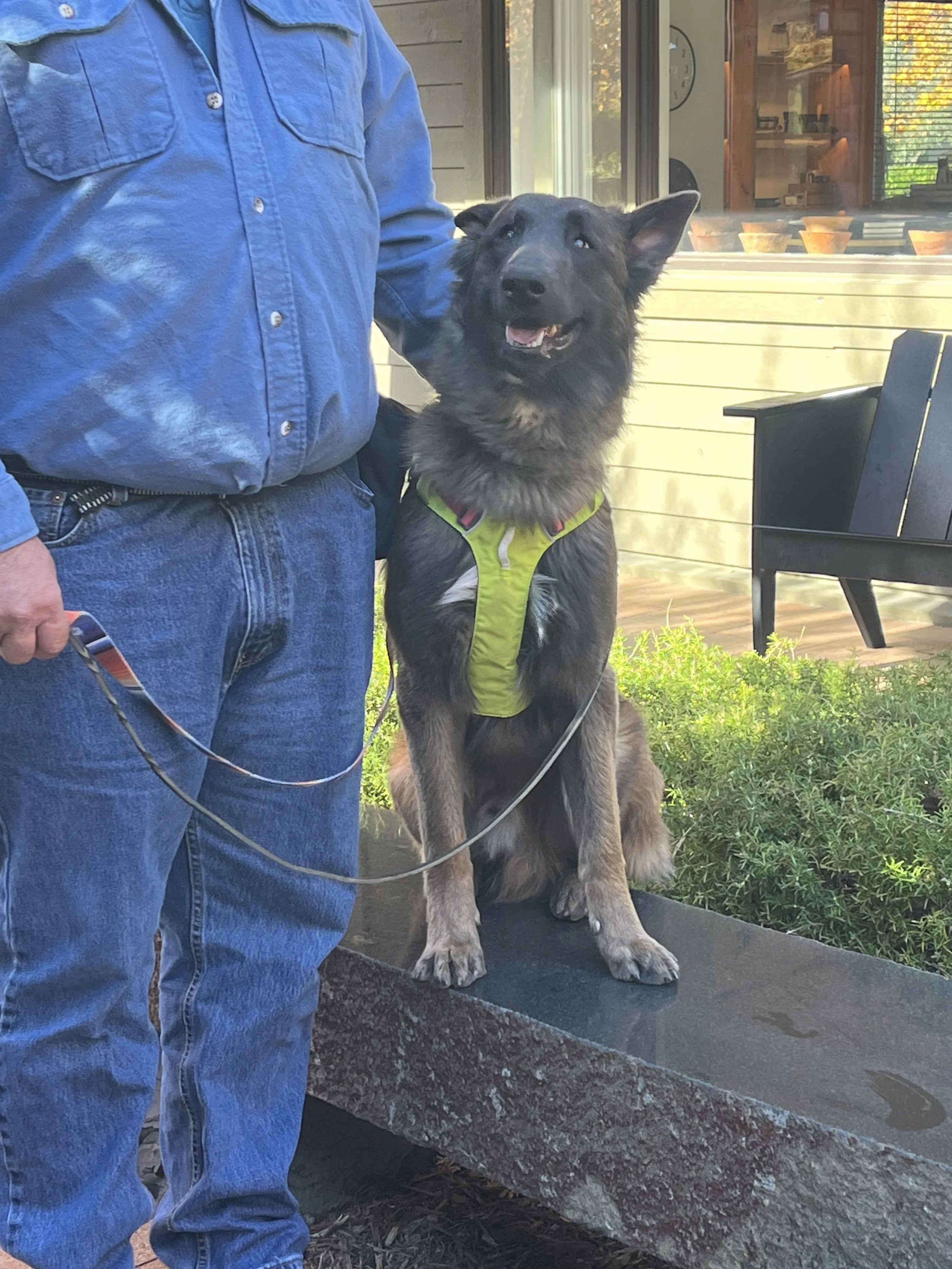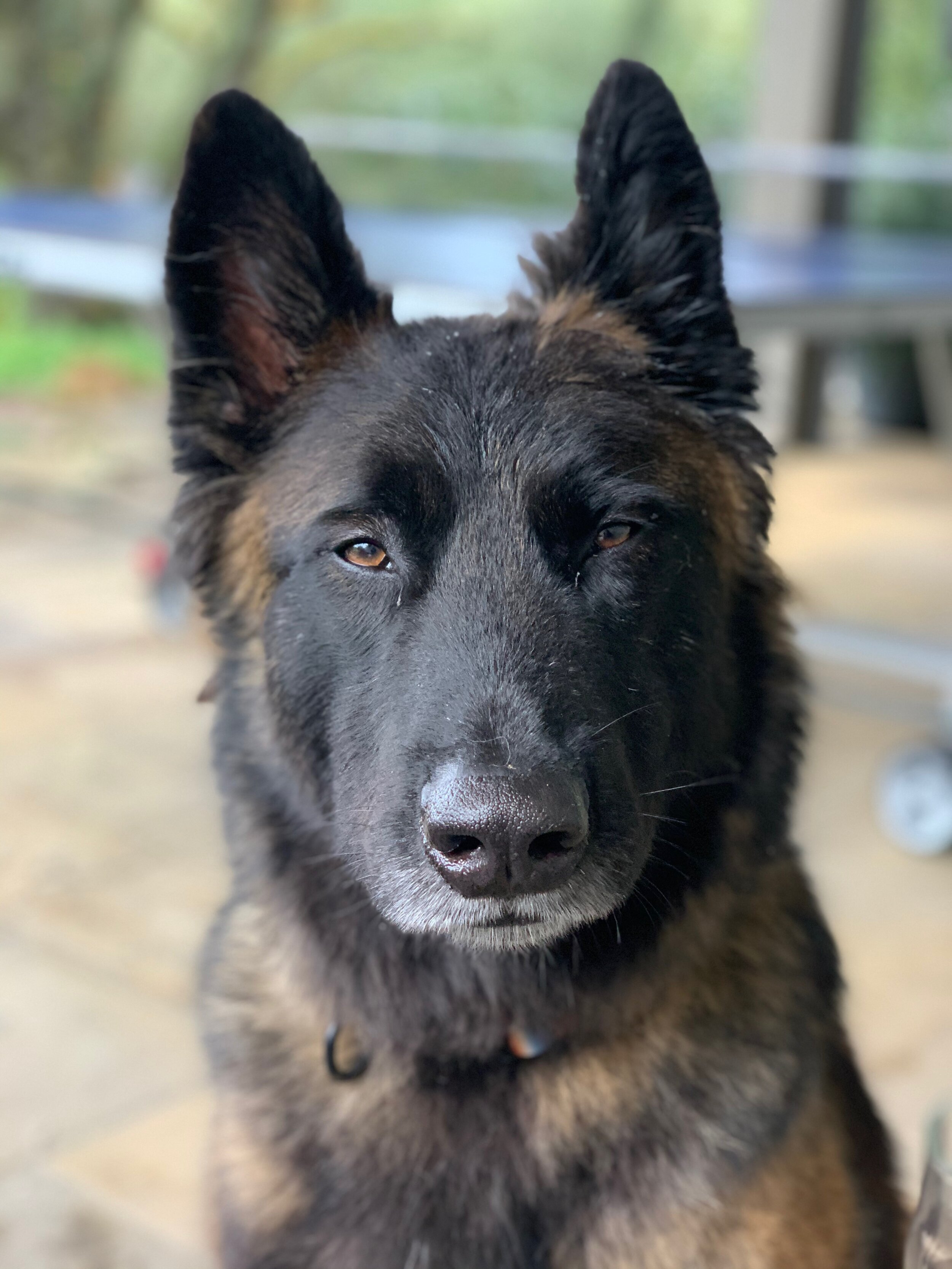PSYCHIATRIC SERVICE DOGS
Psychiatric Service Dogs play a vital role in the day-to-day functioning of someone suffering from a mental health illness.
among their many talents, these service dogs help perform everyday tasks for their person — things that those of us who do not suffer from a mental health illness can easily take for granted.
things like walking across a bridge, remembering to take medication, entering a dark room, or going into public spaces. they help keep their person in the present. these service dogs are truly invaluable to their person.
so we’re explaining it in a few different ways in hopes that it clarifies what these incredible dogs do, their insanely high-level of training, and how invaluable they are for the day-to-day functioning of their person.
A Psychiatric Service Dog is:
A unique and elite type of service dog for use by people suffering from a mental health illness.
Trained to perform specific tasks for its person.
Essential to everyday life for its person.
By its person’s side at most times (work, school, travel, shopping, etcetera).
Trained to a world-class level for 1.5 to 2 years.
Capable of working in the comfort of home or in highly distracting environments.
Federally protected under the US Department of Justice's Americans with Disabilities Act (ADA).
Granted access in the cabin on all US airlines for domestic flights by the Federal Aviation Administration (FAA).
Protected under the Fair Housing Act for housing situations that have a “no pets” policy.
when it comes to what is (and is not) a Service Dog the Federal Law is very clear.
a service dog, as defined in the U.S. Code of Federal Regulations, is any dog who is individually trained to provide assistance to an individual with a disability.
service dogs, when accompanied by an individual with a disability of any kind, generally enjoy complete public access and may go with their disabled handler to almost any place non-disabled members of the public may go.
while there are major exceptions (like sterile medical or laboratory environments), in general, if a person with a wheelchair is allowed to be somewhere, a person with a service dog may also be there.
service dogs may travel and live with their disabled handler free of charge and it is illegal for places of business or for public accommodations to deny a service dog team access.
in order to be a service dog with public access, a dog MUST meet three points of law:
(1). be specifically trained to perform work or tasks that mitigate the handler’s disability;
(2). be accompanied by a person with a physical, mental, developmental or other disability;
(3). be house trained and under the control of the handler.
there are no other requirements (no documentation, no proof of training, no certification, no vests, no special leashes, no special patches, no anything else) for a dog to be a service dog. and it’s quite simple: if a dog is NOT task-trained, working directly for an individual with a disability and under the direct control of the handler, it is NOT a service dog.
psychiatric service dogs help their humans in a variety of ways. here are a few samples of trained behaviors:
interrupt / alert to anxiety: the psychiatric service dog lets its hander know when they are feeling anxious and interrupts with a nose bump, placing head in lap or some other behavior.
calm / comfort anxiety: the psychiatric service dog performs a calming behavior such as making physical contact (laying on top of the hander, placing head in lap, gently learning against the body) when its hander feels distress or anxiety.
block (create space): the psychiatric service dog positions itself horizontally in front of its handler to create personal space.
block (guard/protect): the psychiatric service dog positions itself horizontally in front of its hander to guard/protect.
cover (watch back): the psychiatric service dog positions itself directly behind its handler to “watch” its handler’s back.
and the untrained behaviors which are equally important:
companionship: the psychiatric service dog is a buddy, a best friend, and companion.
non-judgmental: the psychiatric service dog does not judge its handler for their mental illness.
unconditional love: the psychiatric service dog gives its handler something to love and to feel loved in return.
calming: the psychiatric service dog’s physical presence is calming and comforting.
independence: the psychiatric service dog is a source of empowerment for its handler to do things on their own.
happiness: the psychiatric service dog makes its handler smile and brings joy to their life.
leave house: the psychiatric service dog enables its handler to leave the house and feel at ease in public.
connecting to family: the psychiatric service dog helps connect its handler to their family.
routine: the psychiatric service dog adds structure, routine, and responsibility to its handler’s life.
social help: the psychiatric service dog helps its handler make friends and have comfortable interactions.
“keep some room in your heart for the unimaginable.”
— Mary Oliver
the final, and perhaps our favorite, explanation is a simple yet profound analogy.
psychiatric service dogs are like a body part. a truly vital organ that allows its person the ability to function in day-to-day life.
GLOSSARY
learn more about the differences between psychiatric service dogs & emotional support dogs, facility dogs, and comfort dogs.












